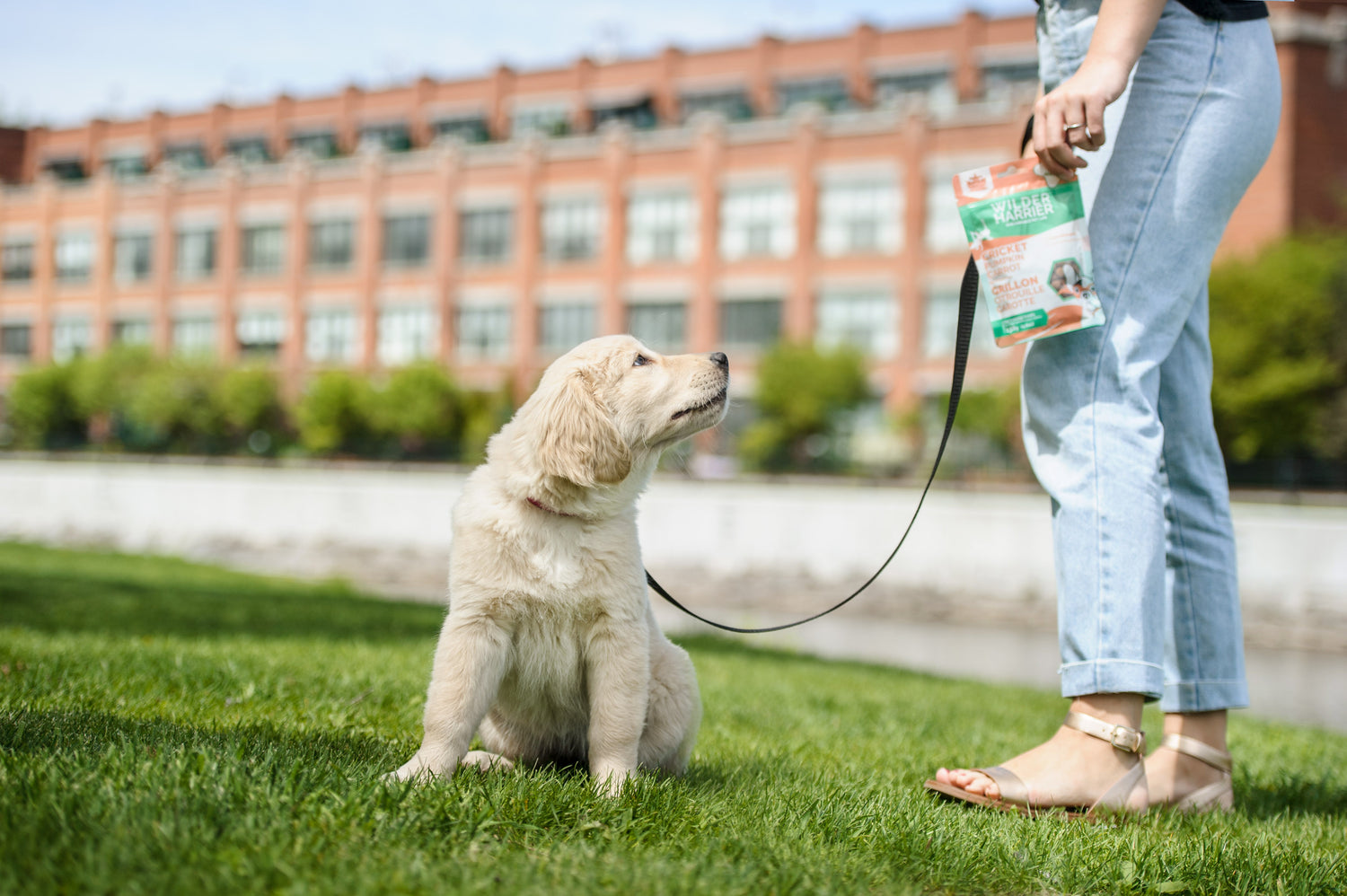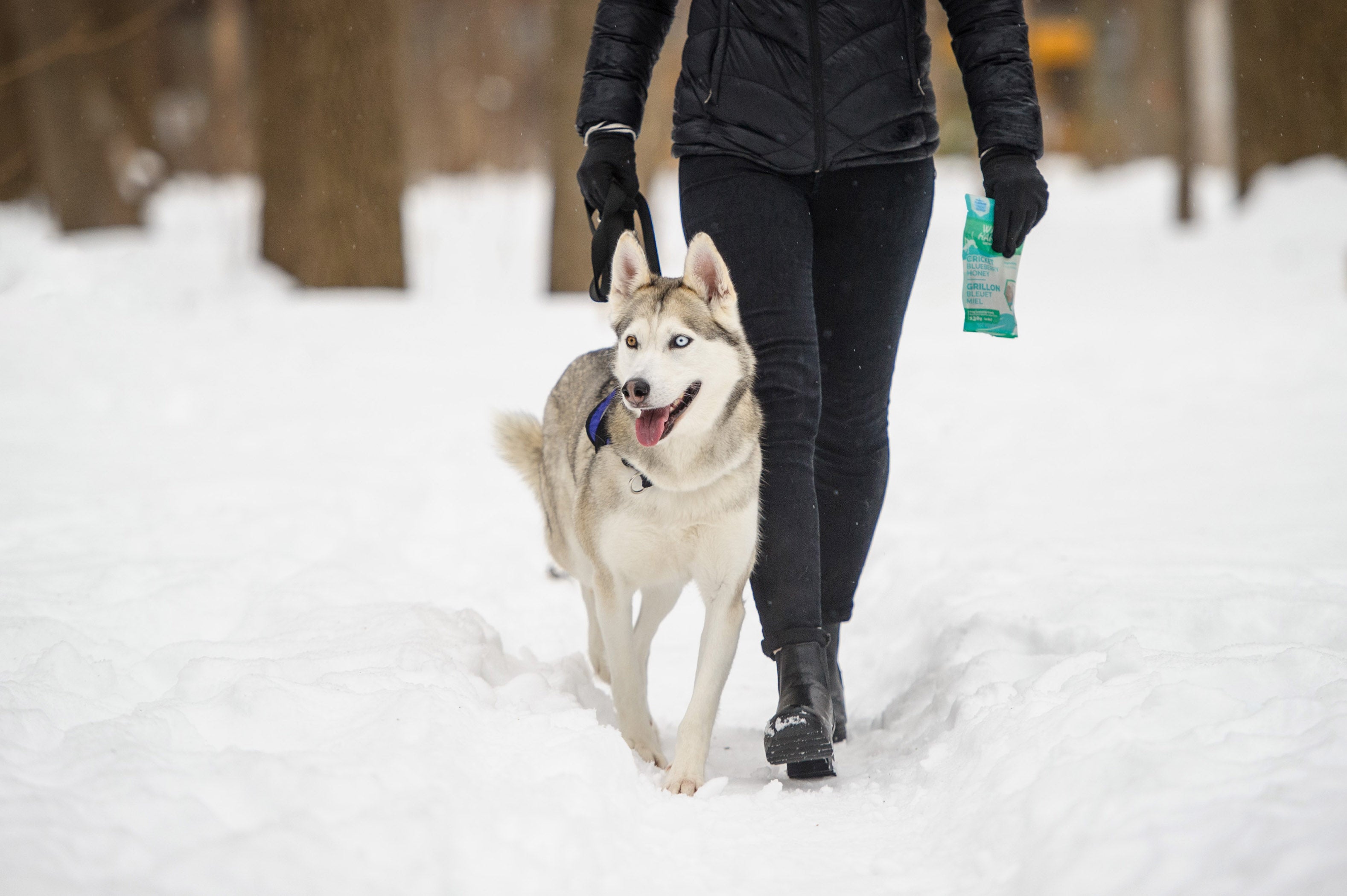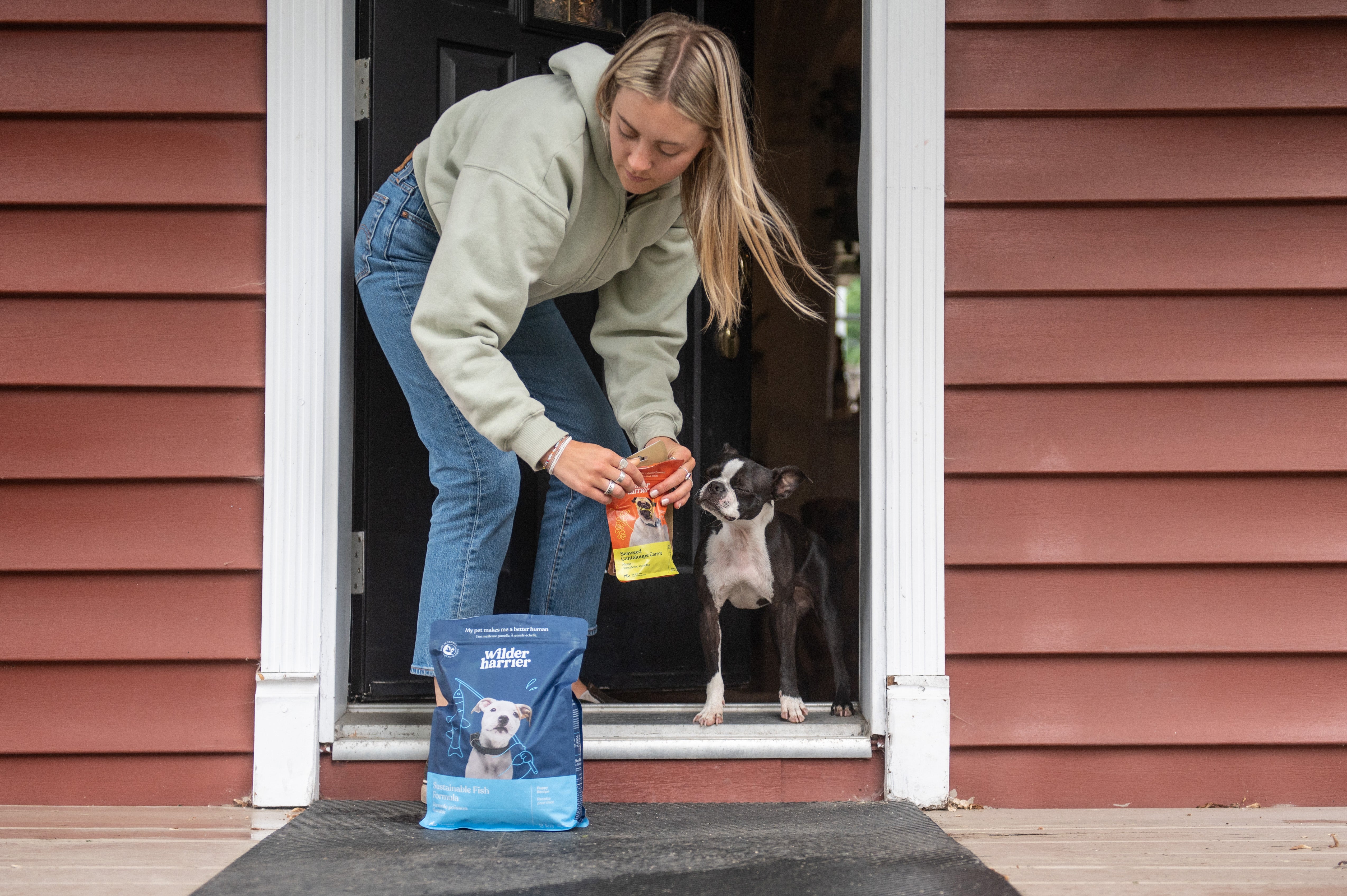Anyone that has been a dog parent knows that walkies are one of the best parts of dog ownership. What better way and excuse do you have to get out of the house than to spend time and talk a stroll with your best buddy?
You’ll need a collar or a harness for that, and of course, a leash. Unless you live in the middle of the forest with no leash laws, then we’re jealous.
In this blog post, we’ll look at both these things that wrap around your beloved pooch, what they do, and the pros and cons of each.
What Is A Dog Harness?
A dog harness is a type of doggy equipment designed to distribute the pulling force of a dog across the body of the animal, rather than concentrating it on the neck.
The reason for such a design is to spread the tension across the chest and body of the dog while supporting its legs, back, neck and chest.
This can be useful for dogs who pull on the leash excessively, as it can help to prevent injury to the trachea and surrounding structures.
In addition, harnesses are often used for dogs who require assistance in mobility, as they provide stability and support. For example, older dogs or those with joint problems may benefit from wearing a harness with a handle when going for walks, so that you can give a quick lift anytime it is needed.
Ultimately, harnesses provide a number of benefits for both dogs and their owners, making them an essential piece of canine equipment.
Advantages Of A Dog Harness
Better control during walking
One of the reasons why many might opt for a harness is because it provides the owner an overall better control of the dog in daily activities. The reason for that is as a harness covers more area of the dog's body compared to a collar, allowing you to control their whole body and not just their front.
Less stress on the neck
Dogs are known for their boundless energy and enthusiasm, but this can sometimes lead to them getting ahead of themselves - and their owners!
A dog constantly pulling on the leash is not just annoying, but will also potentially hurt itself. That's where dog harnesses come in. By evenly distributing the pressure around your dog's chest and shoulders, a well-designed harness can help to prevent strain on the neck and back.
Safe and secure
Dogs tend to get nervous or excited out of the blue. This might turn out to be a problem for you as generally, dogs aren't the best of thinkers when in such situations.
A well-fitting harness is way more difficult to get out of than a collar, which can easily slip over the head if a dog pulls backwards or if the collar is fitted too close. Having your dog get loose in the forest and take off after a fast-moving wild animal wouldn’t be a very good idea!
Disadvantages Of A Dog Harness
Takes time to put on
While practice makes perfect, the first few times putting on the harness is likely to end up in a tangled mess. It is way easier to simply snap on a collar, or even just leave the collar on.
Takes time to adjust
While you may be happy with the use of a harness, your dog might have some other opinions. Imagine putting on a rigid, restrictive jacket for the first time!
Not to worry, have loads of dog treats handy and your dog will come to see the harness as time for a snack! (the walk comes later).
What Is A Dog Collar?
Well, I suppose many of us know what a collar is. There are heaps of different kinds of collars like slip, training, flat, martingale, and head collars.
While they all fit around the neck, they all serve different purposes and should be used in a specific way. For the sake of simplicity, let’s talk about the most common type of collar - the flat collar. This is your everyday collar that comes in a gazillion different sizes, fastenings, and colors.
They are comfortable for 24/7 everyday wear and do not tighten when your dog pulls, unlike slip collars. However, be wary when leaving the collar on for long periods, as it might cause moisture and bacteria buildup, as well as mats and tangles in the coat, leaving your dog vulnerable to hot spots and other skin conditions.
Advantages Of A Dog Collar
Easily put on
Some dogs have them on all the time, and others simply require a snap buckle or a belt buckle. It goes on in a flash and goes off in a flash.
ID Tag
You’ll need an ID tag for your dog, and of course, this works best when the collar is on all the time. It isn’t much use if you return from your walk, take off the collar and your dog promptly hops the fence and takes off to parts unknown.
Disadvantages Of A Dog Collar
Could lead to injury
Have you ever had a dog at the end of the leash pulling as if his life depended on it? Chances are, a few minutes of that, and your dog would be hacking away and choking.
Dogs that are not trained to walk nicely on a leash and pull with all their might are not only annoying for the walker, but they can also hurt themselves severely, so make sure you start training as early as you can.
The trachea, or windpipe, is a tube made of cartilage that carries air from the nose and mouth to the lungs. It's a delicate structure, and it's not meant to bear any weight. However, when your dog pulls on the leash, it puts pressure on the trachea, which can damage the cartilage and cause coughing and difficulty breathing.
In severe cases, tracheal collapse can occur, which is a serious condition that requires immediate veterinary care. We imagine it would feel somewhat like someone punching you in the throat!
Final Thoughts
Ultimately, the decision of whether to use a harness or a collar depends on your individual dog and its needs. Thanks for considering what's best for your pup!




